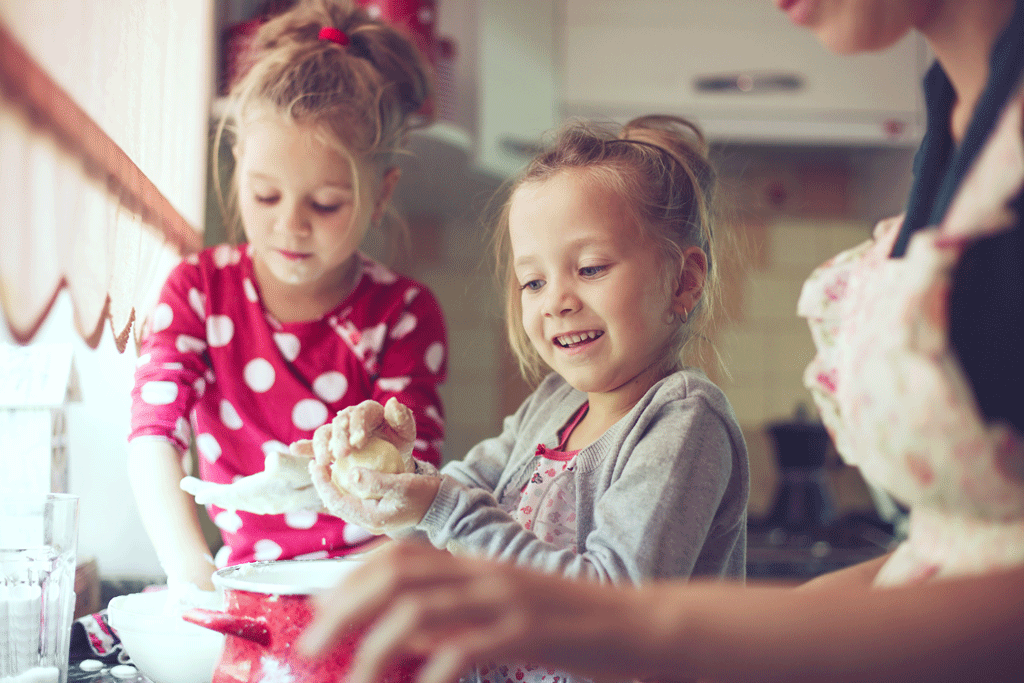Children can gain a great deal from learning cooking basics. It’s not only a healthy hobby, it can promote their well-being and give them skills to enhance their education. Here are some tips for safely acclimating them to the kitchen.
Why should children cook?
Teaching children culinary basics gives them a foundation they can turn to the rest of their lives. Even if they typically are on the run when they get older, there will most likely be times they will need or want to prepare food. Also, according to the Child Development Institute, children embrace real-world math skills in the kitchen when executing recipes, such as learning two quarter cups equals a half cup. Cooking can even help children understand nutrition, calories, and portion control, which can improve their health and fight obesity. Additionally, some studies show that cooking is good for our mental well-being. Culinary therapy is being used to reduce depression, lower anxiety, reduce eating disorders, and help ADHD.

Safety first.
Your first priority should be teaching your child safety in the kitchen. KidsHealth explains children need to know how to safely use potholders when handling hot pans. Show your child how to turn pan handles toward the back of the stove so they don’t accidentally knock hot pots and pans off the stovetop. Also, make sure your kids know to ask for permission before handling sharp utensils and appliances. Explain to your child that the stove is off-limits unless an adult is there to help. Talk with your youngster about microwave use. Your child will need to understand what materials and utensils are safe in the microwave, including specific examples such as not leaving a metal spoon in a bowl when it’s heating.
Fire safety.
It’s important to protect your home from fire. Make sure you test your smoke detectors regularly and never leave your kitchen unattended when cooking. Redfin notes you should ensure you have a working fire extinguisher and that you know how to use it. Remember to keep flammable items away from hot surfaces. Talk with your children about your fire safety plan and select a meeting point in the event you all need to leave the home in an emergency.
Age-appropriate skills.
Even toddlers can participate in kitchen fun, but it’s important to find activities that are appropriate for your child’s age and ability. Some experts suggest youngsters can start with simple duties like washing vegetables and stirring foods that are room temperature. You can increase the complexity of tasks as understanding, dexterity, and overall skill improve. By not overstepping your child’s age and experience you provide better safety and security.
Attitude is everything.
While the kitchen is a potential a danger zone, it’s important to keep a good attitude when you’re instructing your child. After all, if you are too critical or anxious, your child will sense it and won’t have fun. And allow your youngster to make some of the decisions when you’re cooking together, since it’ll give your little one more incentive to participate. For instance, one thought is if your child wants to bake chocolate-chip cookies, bake them. You’ll both enjoy the experience, and you can alternate with a healthier choice next time. Teach as you go. Cooking offers a wealth of teaching opportunities. When a kitchen tool is required that your child is still learning to use, do a demonstration of how it works. When it’s time for your kid to give it a try, stay close and supervise. You should be alert to hazards but keep your body language and tone light. Cooking up fun! While safety is your first concern when introducing your child to cooking, you can also enjoy the time together. It’s a great time to teach your child and enhance learning and health. With proper safety measures in place, your little one can gain life skills and have fun!
Article by Daniel Sherwin at DadSolo.com
